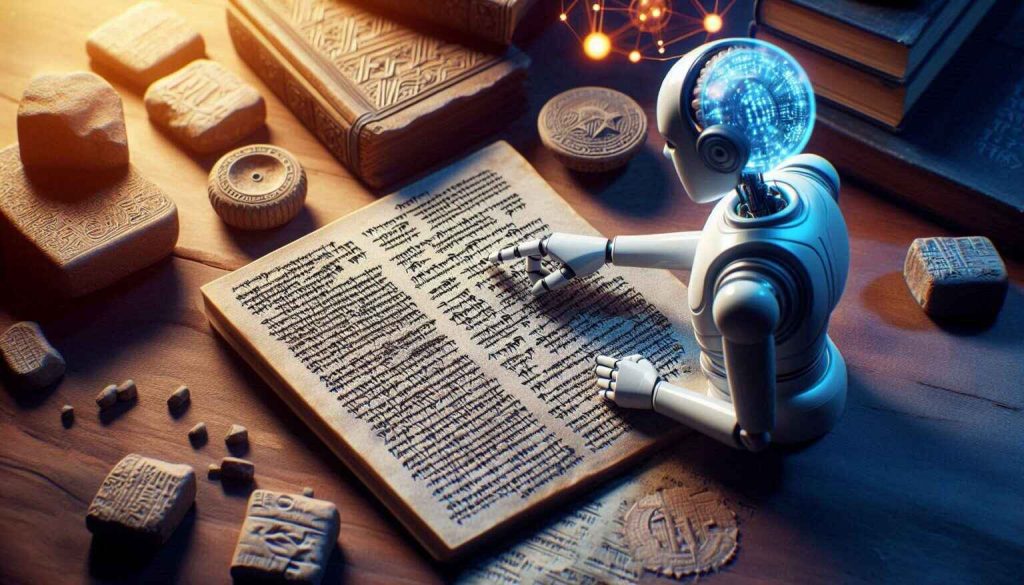
What if AI could read 3,000-year-old manuscripts and tablets?
AI models accurately reproduce cuneiform characters. A breakthrough that could save researchers a lot of time.

AI image generated with Microsoft Bing Image Creator
Artificial intelligence, if science fiction has been talking about it for a long time, it has only been easily accessible by everyone for a relatively short time in reality. Open AI and its GPT model, which made it possible to create an AI chatbot, ChatGPT, have paved the way for other models that can be used in a simplified way thanks to their understanding of everyday language.
If you already use a chatbot to browse the internet, do your homework, write your emails or summarize videos, create code, create images, these advances in artificial intelligence also allow scientists to simplify part of their work or make new discoveries.
An AI model to decipher cuneiform characters
Deciphering the handwriting of some people can be a real challenge. This challenge is even greater when this script is made up of cuneiform characters engraved on 3,000-year-old tablets. To help them decipher these tablets, researchers in the Middle East can now use artificial intelligence (AI).
Researchers at Cornell and Tel Aviv University (TAU) have developed an approach called ProtoSnap that triggers a typeface prototype to adapt it to individual variations printed on a tablet.
In this approach, to see if they could automatically decrypt these scans, the team applied a delivery model. It is a type of generative AI model that is often used for computer vision tasks, such as image generation. This model was used to calculate the similarity between each pixel of a character image on a tablet compared to a general prototype of the same character. The two versions were then aligned, and the model was modified to match the traits of the actual character.
Examples of results (photo below): alignment of prototypes (first line) to target cuneiform images (second line). The results are shown both after the overall alignment (third line) and after the refinement (last line).
Using the ProtoSnap System
The typed characters can also be used to train downstream AI models that perform optical character recognition, i.e., transform tablet images into machine-readable text.
The researchers showed that, when trained with this data, downstream models recognize cuneiform characters much better, even those that are rare or have a lot of variation, compared to previous tests using AI.
“When you go back to the ancient world, you see a lot of variability in the shape of the characters,” says assistant professor of computer science at Cornell Tech and the Cornell Ann S. Bowers College of Computing and Information Science, who led the research. “Even with the same character, the appearance changes over time, and so it’s a very difficult problem to be able to automatically decipher what the character actually means.”
It is estimated that 500,000 cuneiform tablets are preserved in museums, but only a fraction of them have been translated and published. According to Hadar, “There is an infinite amount of 2D scans of these cuneiforms, but the amount of labeled data is very small.”
Rachel, master’s student and TAU co-author, will present “ProtoSnap: Prototype Alignment for Cuneiform Signs” in April at the International Conference on Learning Representations (ICLR).
“At the root of our research is the goal of expanding the ancient sources available to us tenfold,” said Cohen, co-author and professor of archaeology at TAU. “This will allow us, for the first time, to manipulate big data and obtain new measurable information about ancient societies, their religion, their economy, their social and legal life.”
These advances would save researchers precious time and automate part of their work. They could thus compare data on a large scale and compare the characters of different eras, cities or authors.






